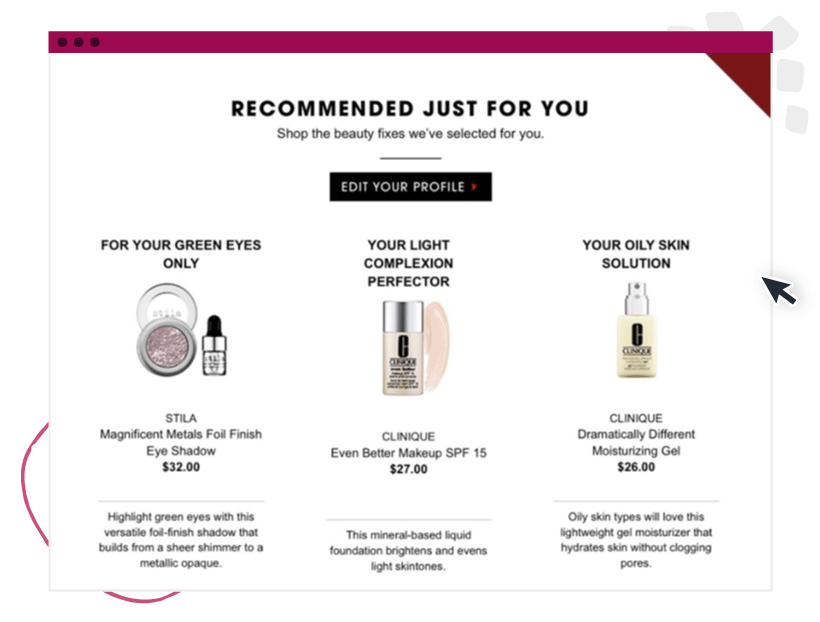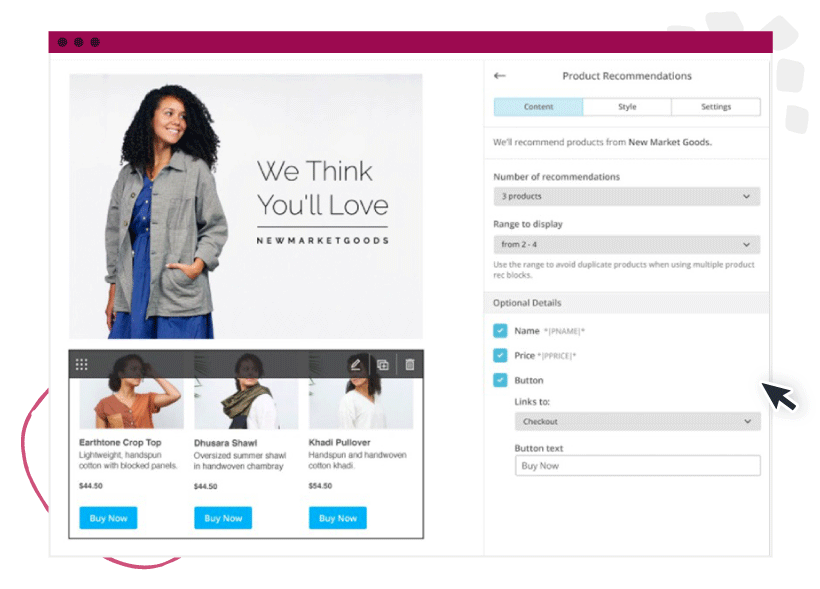Product recommendation emails share personalized and relevant product suggestions with your customers based on their buying and browsing habits on your website. These emails are useful for upsell and cross-sell scenarios, as well as abandoned shopping cart situations.
Product recommendation emails are like having a personal shopper who shows up in your customers’ inboxes. This savvy marketing tactic takes advantage of the power of email marketing, which continues to be an excellent way to reach shoppers. Learn how you can use this technique to sell more and stay top of mind with your target market year-round.
What are product recommendation emails?
Product recommendation emails are smart, targeted emails that are sent to your customers with relevant purchase recommendations. How do you make these recommendations relevant or personalized? By studying the data in the browsing behavior of your customers.
As your customers browse through your e-commerce store, your site’s analytics pick up their browsing behavior. Maybe they enjoy looking at only the latest sales; perhaps they have a fondness for only checking out discounted items. Whatever your customers’ fancy, site analytics always determine this.
This is powerful information that can be used in your follow-up marketing to help your online store make more conversions. In fact, a 2021 Mckinsey & Company report notes that 78 percent of consumers are more likely to make repeat purchases from brands that personalize.
The perfect time to send product recommendation emails
While it may sound counterintuitive to some, no better time exists for your store to send these emails than right after a customer has made a purchase. This also provides you with a great chance to either cross-sell or upsell them.
Here’s an example: Your customer has just purchased a new TV. After you send them the confirmation email for the purchase, you could send another follow-up email, which would be a product recommendation. In it, include recommendations for the following products:
- Extended warranty on the TV (a classic upsell, since it is something that makes the original price of the TV more expensive, but also benefits the customer)
- An accompanying state-of-the-art sound system (a cross-sell because it complements the TV)
Another time to use these emails is in cart-abandonment situations. So if your store’s analytics note that a customer failed to complete a purchase by not clicking on “check out,” even though they have items in their cart, it would be in your best interest (as well as the customer, as many who fail to complete a purchase don’t necessarily want to do that) to send a product recommendation email reminding them of the items in their cart and suggesting they complete the purchase.
Finally, you can always send dedicated product recommendation emails by themselves, as part of an email campaign. These work great when your store’s analytics have acquired data about your customers’ browsing behavior, so you can tailor the product recommendations to what they’ve been searching for on your site.
How to use product recommendation emails
Much of the success of these types of emails is found in their design, both the graphics and the copy. Most email marketing platforms allow you to design the look and copy of these emails right within the platform, which is a user-friendly way to take advantage of this marketing strategy.
The platform will make a recommendation on what products to suggest to your customers based on analytics. Then, all you have to do is decide specifically on which products to include in these emails, how many of them, the type of call-to-action button to include, whether to show the price of the product, etc.
The more you personalize these emails to your customers’ behaviors, the more relevant you make them.
The more your customers get product recommendations that are tailored to their interests and behaviors, the more likely they’ll respond favorably to your product recommendation emails and convert. Upselling and cross-selling related items to your customers in these recommendations ensures relevance and personalization because the items you’re showing your customers either enhance or complement their purchase or intended purchase somehow.






